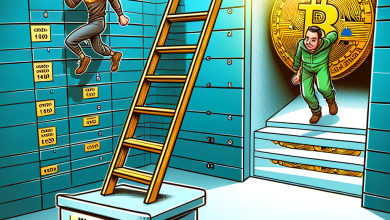District heating – that’s how expensive the connection to the district heating network is for homeowners
Almost every day there is a new water level on the planned ban on new oil and gas heating. At the moment it looks like the Building Energy Act (GEG) will be postponed and softened. It is unlikely that the traffic light coalition will completely dispense with the heat transition for residential buildings. For better or for worse, millions of German homeowners will have to deal with their heating in the coming years.
The rise in heating costs alone will force property owners to replace inefficient systems. According to the Federal Statistical Office, household energy prices rose by 21 percent in March compared to the same month last year. Natural gas prices rose particularly sharply: up 34 percent. The electricity price increased by 15 percent and that for district heating by 12 percent. Only light heating oil became cheaper by 22 percent.
However, it will soon no longer be possible to install new oil heating systems, provided the Building Energy Act is implemented by the traffic light coalition as planned. In addition, the CO2 costs for fossil fuels are likely to increase. Heating with natural gas or oil should then become significantly more expensive in the long term – regardless of price developments on the energy markets. Heat pumps or district heating are usually the only renewable alternatives.
Also read: This is how district heating becomes green
District heating is particularly suitable for apartment buildings in large cities. Because the more parties there are in a house, the lower the connection costs per residential unit. There are often already larger district heating networks in the metropolises and they will be expanded in the coming years. That means more homeowners have an alternative to the heat pump.
Municipalities expand networks
Just as homeowners receive subsidies for replacing the heating system, the federal government supports the municipalities in expanding the district heating networks. The money comes from the Federal Office of Economics and Export Control (BAFA), among others. The Bafa funding pot was set up on September 15 last year.
The expansion of the district heating networks is controlled by the municipalities in consultation with the suppliers. The supplier pays attention to whether further connections are worthwhile for him. This means that he pays attention to the relationship between future income from additional customers and the costs of expanding the network. The expansion pays off for the supplier, especially in densely built-up districts with large apartment buildings.
Many municipalities are pushing ahead with the expansion of district heating. Homeowners should check with their local utility for a possible connection. Some district heating providers, such as Rheinenergie in Cologne, use interactive maps on their website to show which districts are already connected to the grid. The lines can be traced down to individual streets on the maps.
In some communities, homeowners have no choice. There is a compulsory connection to the district heating network. This is also legitimized by the Renewable Energies Heat Act. The prerequisite, however, is that the district heating operator is in the hands of the municipality or is at least under significant control of the municipality. Compulsory connection is usually not possible with a private energy supplier.
Impenetrable tariff jungle
However, the option of connecting to the district heating network alone says little about whether it is also economically worthwhile for the homeowner. In order to be able to assess the profitability of district heating, a look at the complex cost calculation is necessary.
WirtschaftsWoche surveyed five district heating providers in the five largest German cities of Berlin, Hamburg, Munich, Cologne and Frankfurt. Depending on the provider, the details in the price catalogs are different. In the basic structure of the costs for district heating customers, however, there are many similarities in terms of both consumption and grid connection.
The precise analysis of the conditions is all the more important for district heating because there is only one provider – unlike natural gas, for example. Once connected to the grid, homeowners are at the mercy of the utility’s pricing policy. Recently, some suppliers have increased their district heating tariffs significantly.
District heating is still subject to a statutory upper limit of 9.5 cents per kilowatt hour for 80 percent of the previous year’s consumption. For the rest, the full market price is to be paid. When the price brake expires, the full price applies again for 100 percent of consumption.
1. Consumption costs
The running costs of district heating are made up of the consumption (working price) and a consumption-independent fee (basic price). In the Munich city area, for example, private households pay 16.70 cents per kilowatt hour in the heating water network of the municipal utility. That is significantly more than the price brake currently allows.
On top of that, there is an annual basic price of 46 euros per kilowatt of output, regardless of consumption. As a third component, Stadtwerke München requires an annual metering fee, which is graded according to the amount of heat measured. Other providers such as Vattenfall in Berlin do not charge a metering fee and only calculate with a working price and a basic price.
2. Connection costs
Homeowners who think that the one-time connection cost will make things easier are wrong. Because here, too, the district heating providers differentiate between several components. The first component is the construction cost subsidy. The subsidy means the property owner’s contribution for the district heating connection to the house.
The utility EnBW, for example, calculates the following for its district heating network in Stuttgart: “The construction of a house connection line around ten meters long, the connection to an existing supply line and the commissioning of the transfer station can result in costs of around 50,000 euros. Of these, the customer usually has to pay around 20,000 to 30,000 euros.”
How much the homeowner actually has to pay depends on the individual case. The closer an existing connection is, the cheaper it is usually. The Berlin district heating provider Vattenfall points out that the connection costs also depend on how many properties are to be connected in a street. Connecting one or two-family houses separately is usually uneconomical.
The suppliers advertise that the connection costs for the district heating only accrued once. Subsequent replacement of the heating system at the end of its useful life or in the event of an accident is not necessary. While this is correct, it assumes that the homeowners are looking at a time span of more than 30 years.
However, the connection costs charged by the district heating provider do not cover the homeowner’s entire expenses. For example, they often have to have new pipes installed in the house. The construction measures are likely to be more complex than those with central heating, especially in multi-family houses with floor heating. Property owners should therefore obtain a cost estimate for the necessary conversion measures from a craft business.
Subsidies: 30 percent are certain
According to the previous draft law, homeowners should receive a basic subsidy of 30 percent of the costs for a district heating connection. There is a further bonus of 20 percent if property owners replace an old oil or gas heating system, although they are not legally obliged to do so.
Other income-related bonuses have not yet been clarified. The Greens signaled that they would subsidize up to 80 percent of the costs for heat pumps in financially weak households. It remains unclear whether this would also apply to a district heating connection. The Federal Council is currently examining the draft law. The federal states have already requested various amendments to the law.
The Federal Office of Economics and Export Control (BAFA) currently pays 30 percent of the costs for a district heating connection. This corresponds to the basic subsidy according to the draft law. The total eligible costs are capped at 60,000 euros per year at Bafa. This amount also includes other construction measures such as insulating the facade.
Also read: Where the heat pump has no place, more district heating should take over the climate-friendly heating. The technology has a lot of potential. But there is a problem.






